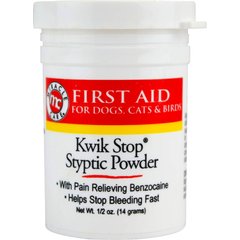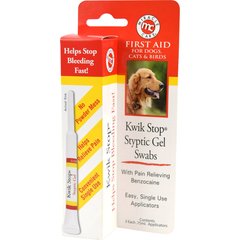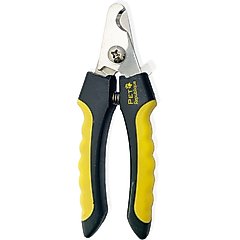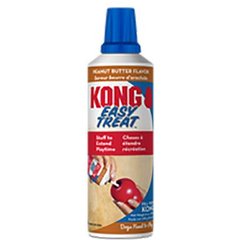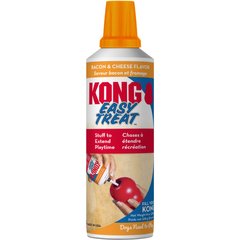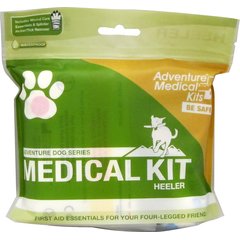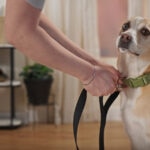Dog Nail Bleeding: What To Do and How To Stop It
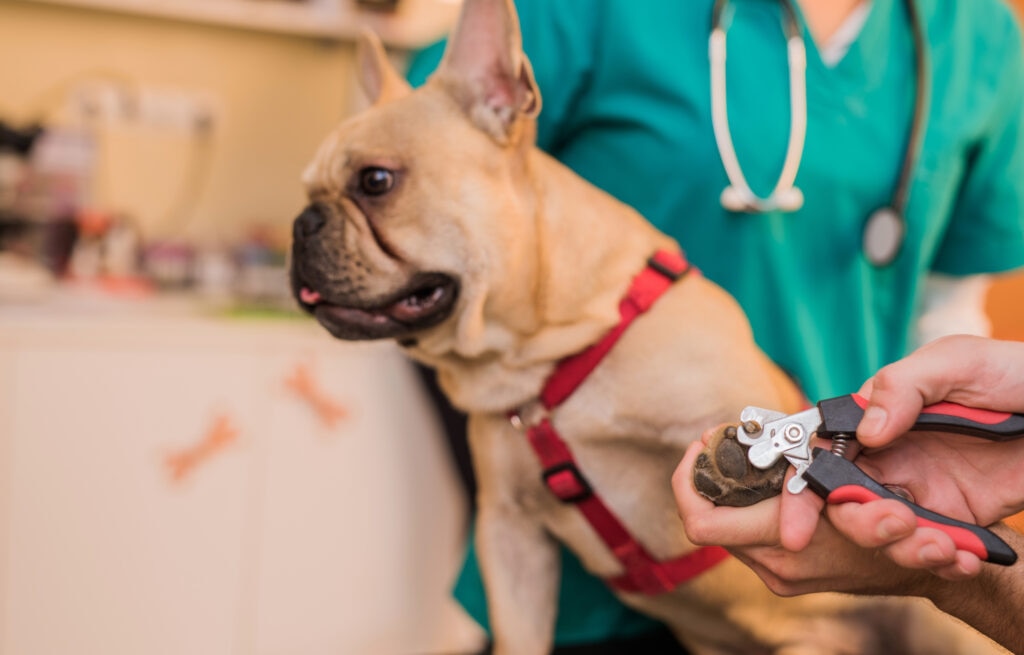
Photo by DjelicS/E+
A bloody dog nail can look dramatic. At minimum, you’ll notice some blood droplets on the floor. At worst, there’s blood everywhere—on the furniture, your pup, your clothes or car—and lots of licking can make things worse.
A bleeding nail can put any pet parent into a panic.
Stressful as it may seem, in most cases, it’s OK to administer treatment at home if you have the right tools and take calm steps.
Knowing what causes dog nail bleeding and how to stop it will help you keep your pup safe and comfortable.
Key Takeaways
- Dog nail bleeding is often manageable at home with styptic powder and calm handling.
- Over-trimming, cracks, or injuries during play are common causes of nail bleeding.
- Keeping nails trimmed regularly can help prevent bleeding accidents.
- In some cases, like prolonged bleeding or signs of infection, vet care is necessary.
Why Do Dog Nails Bleed?
Each of your dog’s nails contains a core called the quick, which carries nerves and blood supply.
“Each of your dog’s nails has a pink center called the quick, which carries blood vessels and nerves,” explains Dr. Emily Gamm, DVM, associate veterinarian at South Sioux Animal Hospital in South Sioux City, Nebraska. “Think of your own fingernails—if you cut into the pink part, it hurts and may bleed. The same is true for dogs.”
Aside from trimming too short, nails may bleed if they split or crack from being too long. They can also become injured if your dog plays on rough surfaces like pavement or gravel.
Some dogs may be more prone to breakages than others. Dr. Gamm explains that working dogs or those who do agility use their claws like how an athlete uses cleats on their shoes. These dogs may wear down their nails and need trims less frequently. But they may also be more prone to breaking or splitting a nail, which can cause bleeding.
Dr. Gamm lists a few other common reasons for nail blowouts, including nails getting caught during play, on clothes, in high-pile rugs, on wood floors, or on fences.
Dogs with dark nails are especially tricky to trim because the quick is harder to see, which makes small, careful trims more important.
“With dark nails, you often can’t see the quick,” says Dr. Gamm. “Trim just a little at a time and look at the nail end-on. When you start to see a dark spot appear in the center, stop cutting—you’re getting close to the quick.”
She recommends using a Dremel or nail grinder for extra control, or having your vet or groomer demonstrate safe trimming first.
Recommended Products
It’s important to be extremely cautious with darker nails and when in doubt, take your pup to the vet for a nail trim.
How to Stop Dog Nail Bleeding at Home
If your dog’s toenail is bleeding, don’t panic.
Here’s what to do:
- Stay calm and reassure your pup—your demeanor will help keep them steady.
- Apply styptic powder, a styptic gel swab, or a styptic pencil. These products act as astringents/cauterants to promote clotting and stop bleeding fast.
Recommended Products
3. If you don’t have styptic powder handy, press cornstarch or flour onto the tip of the nail as a backup. You can also rake the nail across a bar of unscented, preferably antibacterial soap to stop the bleeding as well.
4. Apply gentle but firm pressure with a clean cloth or gauze for a few minutes.
5. Keep your dog still long enough for the blood to clot.
6. Discourage licking so the clot can form. Use a recovery collar or briefly cover the paw with a clean sock secured loosely with tape. Bacteria in the mouth also will cause the nailbed to get infected, so a protective collar is essential.
Recommended Products
7. Once bleeding stops, keep the nail tip clean and protected for a few hours, limiting running and rough play.
The last part can be difficult, especially for excitable pups who don’t want to sit still.
“Styptic powder sticks naturally to moisture, so it’ll adhere right to the bleeding nail,” explains Dr. Gamm. “You only need a tiny bit. Press it gently but firmly into the nail for 15-30 seconds. If you’d rather not use your fingers, a Q-tip works, too.”
She adds that keeping your dog calm helps slow the bleeding.
“The more worked-up they are, the higher their blood pressure, and the nail may keep oozing. Try to keep your dog as relaxed and calm as possible,” Dr. Gamm says. She recommends a tasty distraction: putting peanut butter or canned spray cheese in a Kong or lick mat helps!
Recommended Products
If bleeding doesn’t stop after 20 minutes or if your dog seems like they’re still in pain, call your vet. They’ll help you assess whether a clinic visit is necessary.
How to Prevent Dog Nail Bleeding
The best way to avoid bloody dog nails is prevention. Using the right tools and techniques during nail trims can make it less likely you’ll nick the quick.
- Use proper clippers designed for your dog’s size and nail type.
Recommended Product
- Trim small amounts gradually. Dr. Gamm recommends cutting in small stages, particularly for long nails or dark-nailed dogs, rather than attempting to remove too much at one time.
- Make nail trims a positive experience. Offer treats throughout the process. Anxious pups may also need gentle restraint, and in some cases your vet may need to prescribe calming medication to give ahead of time.
Recommended Product
- Try a Dremel or nail grinder. These tools gradually smooth the nail and reduce the risk of cutting too short.
- Keep styptic powder handy before every trim. It’s better to be safe than sorry!
- Dogs with very long nails and quicks may benefit from more frequent nail trims (every couple of weeks) to help shorten their quick over time, says Dr. Gamm.
Dr. April Gessner, DVM, is the founder and director of DEGA Mobile Veterinary Care in Willow Spring, North Carolina. She says keeping dogs calm during nail trims can minimize the risk of accidentally cutting too short.
Some dogs—especially ones who are anxious or squirmy—may need some extra help (and another set of hands) to stay calm during nail trims.
“For anxious dogs, distraction is key,” she says. Gessner has a few tactics to keep pups from wriggling into bloody nail territory. “Have another person hold a spoon with peanut butter or a squirt of easy cheese for them to lick during a trim,” she says. Other dogs may have better luck if someone holds them in a bear hug while gently tapping them on their head, which can keep them distracted long enough to make a clean cut.
Recommended Products
While many dogs who are anxious about nail trims can be distracted using these methods, she says it may not be enough. In those cases, vet-prescribed calming medication given beforehand can help take the edge off.
“Those that do need at-home oral meds may still need a treat distraction on top of that,” Gessner says.
If your dog shows extreme fear (biting, flailing, running away), Gessner advises leaving nail trims to a groomer or vet.
In rare cases, Gessner says it may be best to have nail trims done at your veterinarian under full sedation, which is necessary for some dogs who are extremely afraid.
When to See Your Vet
Most dog nail bleeding can be managed at home, but there are situations that require professional care.
If any of the following occurs, call your vet:
- The bleeding doesn’t stop within 20 minutes.
- Your dog is limping, licking excessively, or guarding their paw.
- The nail is badly broken or torn, with the quick or nail bed exposed. This can be very painful, and your vet may recommend pain medication.
- You notice any signs of infection, such as redness, swelling, or discharge. This may require an antibiotic prescribed by your vet.
“These are signals that the nail needs more than first aid,” Dr. Gamm emphasizes.
It’s possible to make nail care a low-stress experience, even if they don’t inherently love it. “Get your pet used to just having their feet touched and handled—utilize lots of positive reinforcement training,” Dr. Gamm advises. “Then start slowly with the trimming and give them lots of breaks.”
If your dog is still struggling, reach out to your groomer or vet for additional advice.
Conclusion
Dog nail bleeding can be scary, but with the right tools and preparation, it’s usually something you can manage at home.
Keep styptic powder in your pet first-aid kit, trim nails in small increments, and don’t hesitate to lean on your vet or groomer for help if needed.
Recommended Product
View regular nail trims as preventative maintenance that can help keep your dog’s nails healthy and less likely to catch on something.
Keeping nails short (but not too short!) can help avoid most accidents before they start. And if a bloody nail does make its messy appearance, remember that patience, pressure, and a few first aid supplies will help keep bleeding to a minimum.


